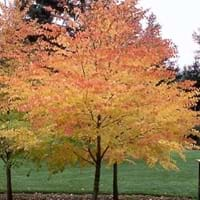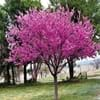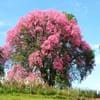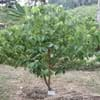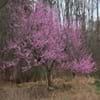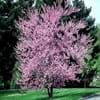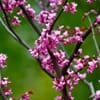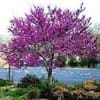What is
Life Span
Perennial
Perennial
Type
Tree
Flowering Plants, Fruits, Trees
Origin
Eastern Asia, China, Japan
Anatolia, Asia, Europe, Iran, Maghreb, Morocco, Norway, The Hiamalayas
Types
Heronswood Globe , Kreukenberg Dwarf
Flowering Cherries, Sour Cherries, Sand Cherries, Sweet Cherries, Capulin Cherries
Number of Varieties
10
99+
100
99+
Habitat
shaded moist road banks, Wet Woods
Forest edges, Wild, Woods
USDA Hardiness Zone
4-8
4-8
AHS Heat Zone
8-1
10-1
Sunset Zone
2b, 3a, 3b, 4, 5, 6, 14, 15, 16, 18, 19, 20
4, 5, 6, 7, 15, 16, 17
Habit
Oval or Rounded
Upright/Erect
Information
Plant Size
Minimum Height
1,220.00 cm
33
17.50 cm
99+
Minimum Width
1,220.00 cm
14
17.50 cm
99+
Plant Color
Flower Color
Red, Green
White
Flower Color Modifier
Bicolor
Not Available
Fruit Color
Green, Copper, Sandy Brown
Red
Leaf Color in Spring
Purple, Light Green, Bronze
Dark Green
Leaf Color in Summer
Green
Orange
Leaf Color in Fall
Yellow, Gold, Orange Red
Orange
Leaf Color in Winter
Not Available
Orange
Shape
Leaf Shape
Heart-shaped
Oblong
Thorns
No
No
Season
Plant Season
Spring, Summer, Fall, Winter
Spring, Summer
Growing Conditions
Sunlight
Full Sun, Partial Sun
Full Sun, Partial shade
Growth Rate
Medium
Medium
Type of Soil
Clay, Loam
Loamy, Well drained
The pH of Soil
Acidic, Neutral
Slightly Acidic
Soil Drainage
Well drained
Average
Bloom Time
Early Spring
Early Spring, Spring
Repeat Bloomer
No
No
Tolerances
Not Available
Heat And Humidity, Not Available
Care
Where to Plant?
Ground
Ground
How to Plant?
Seedlings, Transplanting
Grafting, Seedlings, Transplanting
Plant Maintenance
Medium
Medium
Watering Plants
Watering Requirements
Keep ground moist, Use Mulches to help prevent water loss during hot and windy weather
Never Over-water, Over-watering can cause leaf problems or root diseases, Prefer drip-irrigation instead of Over-head watering, Water twice a day in the initial period
In Summer
Lots of watering
Lots of watering
In Spring
Moderate
Moderate
In Winter
Average Water
Average Water
Soil
Soil pH
Acidic, Neutral
Slightly Acidic
Soil Type
Clay, Loam
Loamy, Well drained
Soil Drainage Capacity
Well drained
Average
Sun Exposure
Full Sun, Partial Sun
Full Sun, Partial shade
Pruning
Prune if you want to improve plant shape, Remove dead branches
Don't prune in the fall, Prune if you want to improve plant shape, Prune in late winter, Remove dead or diseased plant parts, Remove deadheads
Fertilizers
All-Purpose Liquid Fertilizer, Apply 10-10-10 amount
All-Purpose Liquid Fertilizer
Pests and Diseases
Bacterial leaf spot, Leafminers, Red blotch
Aphids, Bacterial Canker, Black Knot, Brown Rot, Caterpillars
Plant Tolerance
Salt and Soil Compaction, Shade areas, waterlogging
Drought
Facts
Flowers
Insignificant
Yes
Flower Petal Number
Not Available
Not Available
Fruits
Showy Fruit
Yes
Yes
Edible Fruit
No
Yes
Fragrance
Fragrant Flower
No
Yes
Fragrant Fruit
No
Yes
Fragrant Leaf
Yes
No
Fragrant Bark/Stem
No
No
Showy Foliage
Yes
No
Showy Bark
Yes
Yes
Foliage Texture
Medium
Not Available
Foliage Sheen
Matte
Not Available
Evergreen
No
Yes
Invasive
No
No
Self-Sowing
Yes
No
Attracts
Birds, Butterflies
Birds
Allergy
sneezing, Sore eyes
Swelling in the face
Benefits
Uses
Aesthetic Uses
Beautification, Cottage Garden
Showy Purposes
Beauty Benefits
Making cosmetics, Skin Problems
Not Available
Edible Uses
No
Yes
Environmental Uses
Shadow Tree, soil stabilisation
Air purification
Plant Benefits
Medicinal Uses
Not Available
Arthritis, Gout, Kidney problems, Rheumatoid arthritis, Swelling
Part of Plant Used
Whole plant
Flowers, Fruits
Other Uses
Showy Purposes, Used as Ornamental plant, Used in pulpwood and lumber production
Wood is used for making furniture
Used As Indoor Plant
No
No
Used As Outdoor Plant
Yes
Yes
Garden Design
Feature Plant, Shade Trees, Street Trees
Not Available
Scientific Name
Botanical Name
CERCIDIPHYLLUM japonicum
Prunus avium
Common Name
Katsura Tree
Cherry Tree
In Hindi
Cercidiphyllum
चेरी का पेड़
In German
Kuchenbäume
Kirschbaum
In French
Cercidiphyllum
Cerisier
In Spanish
Cercidiphyllum
Cerezo
In Greek
Cercidiphyllum
κερασιά
In Portuguese
Cercidiphyllum
árvore de cereja
In Polish
Grujecznik
wiśniowe drzewo
In Latin
Cercidiphyllum
Cherry
Classification
Kingdom
Plantae
Plantae
Phylum
Magnoliophyta
Magnoliophyta
Class
Magnoliopsida
Magnoliopsida
Order
Hamamelidales
Rosales
Family
Cercidiphyllaceae
Rosaceae
Genus
Cercidiphyllum
Prunus
Clade
Angiosperms, Eudicots
Angiosperms, Eudicots, Rosids
Tribe
Not Available
Not Available
Subfamily
Not Available
Not Available
Number of Species
2
99+
Not Available
|
||
|
||
|
